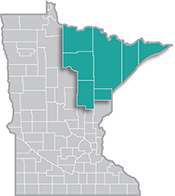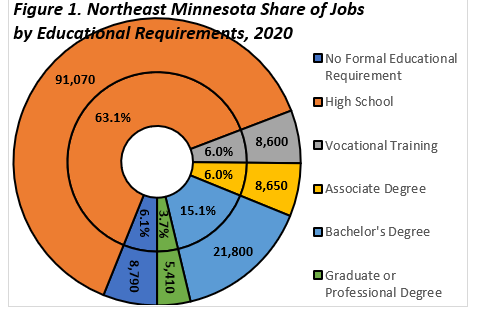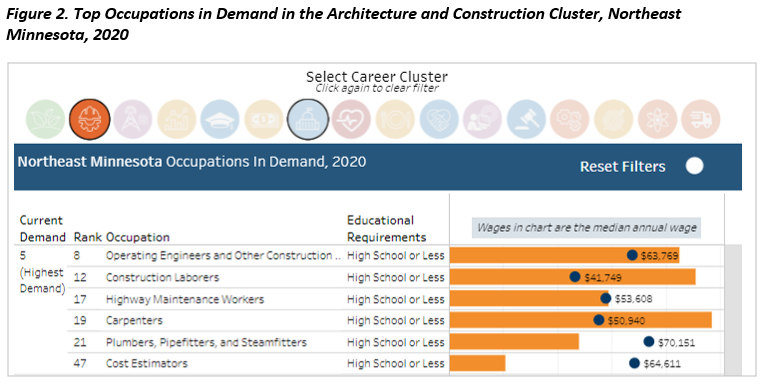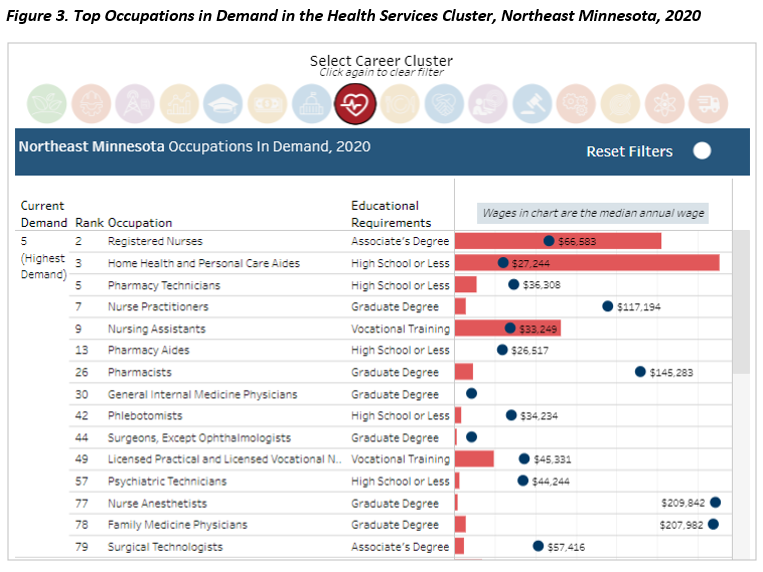 Home to the state's second-largest metro, the Northeast Region has a strong industrial sector, tied largely to the area's abundant natural resources.
Home to the state's second-largest metro, the Northeast Region has a strong industrial sector, tied largely to the area's abundant natural resources.
Most of the manufacturing base centers on mining and forest products industries. More than half of the sector's employment is in paper and machinery manufacturing.
Want the freshest data delivered by email? Subscribe to our regional newsletters.
2/24/2021 9:00:00 AM
Carson Gorecki
A popular belief is that you have to go to college to get a great-paying job. The data in DEED's Career Pathways Tool and the information on our career exploration page show that not all great jobs require college, and not all college graduates end up with great-paying jobs. There are many paths to a great career and these resources help students and people considering a career change get the information to make the choices that work best for them.
The Career Pathways Tool takes occupational employment, wages, education requirements and demand and weaves it together with the fields, clusters and pathways of the Minnesota State Career Wheel. Combined, and in one place, these data are a powerful resource for students, counselors and parents looking to gain a better understanding of how certain education and training aligns with employment opportunities in Minnesota. Equipped with information, students and Minnesotans considering a career change are better prepared to choose the career path that is best for them.
One of the sources that Career Pathways pulls from is DEED's Occupations in Demand. In 2020 there were 250 occupations in demand in Northeast Minnesota, 150 of which require less than a four-year degree. Of those 150, 60% offer wages greater than the regional median. More than four out of every five jobs in the region do not require a four-year or advanced degree (see Figure 1). Vocational training and associate degree programs offer shorter and more affordable alternatives to the traditional four-year degree track, and still provide pathways to good paying, in-demand jobs in many fields. Licensed Practical and Licensed Vocational Nurses, Automotive Service Technicians and Mechanics, Forest Conservation Technicians, and Computer Network Support Specialists are a few examples of the diverse options available that don't require a four-year degree.

Each career cluster contains great career opportunities, yet some clusters more promise. The Architecture and Construction cluster has six occupations in the top 50 in-demand occupations, each of which requires only a high school diploma and pays a wage greater than the median for all occupations. In-demand Construction occupations, due to their typical education requirements, have relatively low barriers to entry, yet pay good wages (See Figure 2). Among those, Operating Engineers and Other Construction Equipment Operators takes the top spot and is expected to grow 11.2% by 2028. Half of Operating Engineer jobs pay between $52,822 and $77,843 a year. In-demand occupations like Operating Engineers, with proven long-term growth, are often good bets.

Like Architecture and Construction, the Health Sciences cluster has many in-demand occupations. However, unlike the most in-demand Architecture and Construction occupations, there is more variety in the median wages, educational requirements, and employment levels in the Health Science occupations. Two occupations that are good representations of this diversity are Home Health and Personal Care Aides and Nurse Practitioners. Home Health and Personal Care Aide positions are abundant in the region, require a high school diploma or less, and pay between $24,514 and $30,353 a year. Nurse Practitioner positions are fewer and typically require a master's degree and pay between $106,543 and $127,832 a year. In many ways these two occupations represent separate stops along one potential career pathway.

There are no "correct" career pathways. Each worker blazes their own trail based on experience, training, skills, values and preferences. By providing many opportunities for entry at various levels of education and pay, Health Services creates "ladders" for workers to advance and "lattices" for workers to move laterally to different but related occupations. By making potential career advancement opportunities known, employers can make positions more attractive to candidates. Well-articulated career pathways contribute to the strength and popularity of the health care industry in the region and can be a model for other sectors.
Learn more about how to blaze your own career trail.
Contact Northeast Minnesota Labor Market Analyst Carson Gorecki at 218-302-8413.